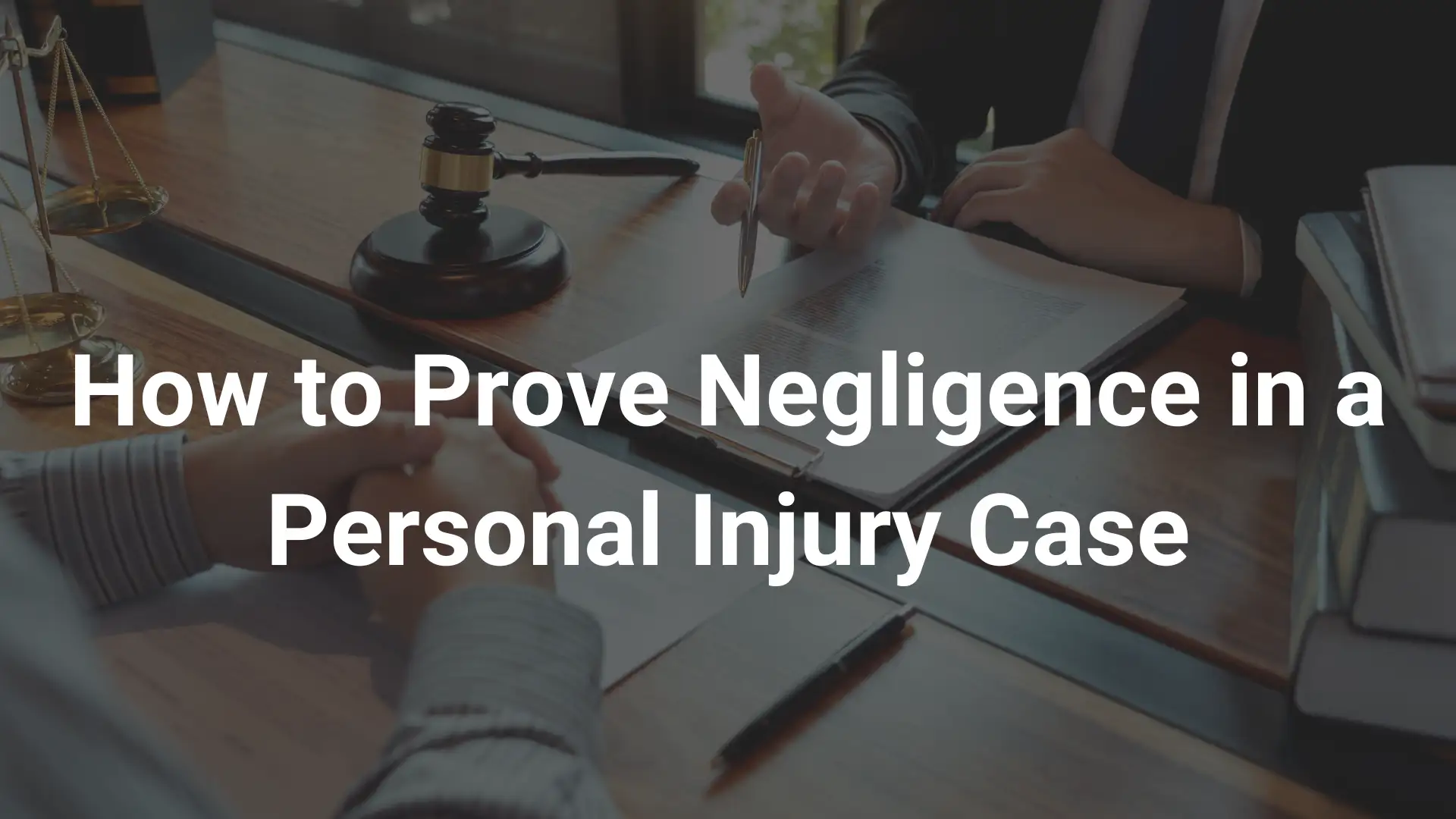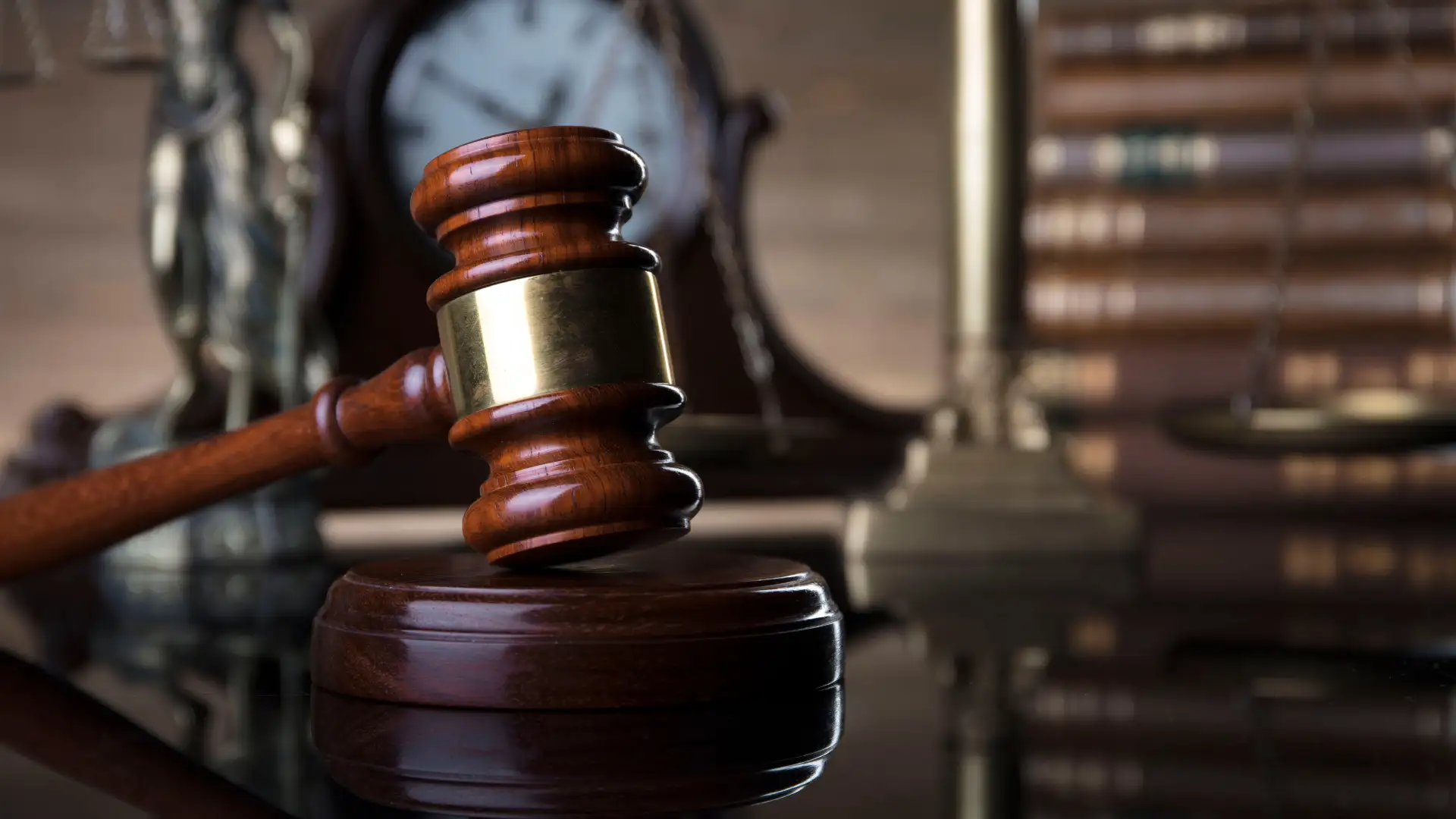
Whether recovering from a car wreck, a slip-and-fall, or another preventable incident, understanding how to prove negligence in a personal injury case you had can significantly impact the outcome.
What Is Negligence in a Personal Injury Case?
Negligence occurs when someone fails to act with the level of care a reasonable person would use in the same situation. That failure causes harm to someone else. In California, proving negligence requires establishing four essential components—so, what are the elements of negligence?
The defendant may not be legally responsible for your injuries without all four.
- Duty of care. The defendant had a legal obligation to act with reasonable care. For example, drivers must obey traffic laws and avoid putting others at risk.
- Breach of duty. The defendant failed to meet that obligation. This could involve texting while driving, leaving a spill unattended in a store, or violating workplace safety regulations.
- Causation. There must be a direct connection between the defendant’s breach and your injury. You will need to show that their actions (or inaction) were the actual cause of your harm.
- Damages. The final element, you must have suffered actual, provable losses, such as medical expenses, lost wages, or emotional distress.
Each element plays a critical role in your claim. Missing one could weaken or block your case entirely.
Why the Burden of Proof Matters
In civil court, the burden of proof rests with the injured party. This means you must convince the jury or judge that it is more likely than not that the other party acted negligently. It’s a lower standard than the burden of proof in criminal cases, but requires strong, organized evidence.
If the court decides the defendant more likely than not caused your injuries, you may receive compensation for:
- Medical expenses
- Lost income
- Property damage
- Pain and suffering
- Emotional distress
However, if your evidence is weak or incomplete, the court may deny your claim, no matter how badly you were hurt. That’s why legal strategy matters just as much as the facts of your case.
Please read more about personal injury compensation here: How Personal Injury Compensation Is Calculated in California.
Types of Evidence That Help Prove Negligence
Building a strong and common personal injury case requires collecting evidence that supports every part of your claim. Here’s what you or your attorney should focus on:
Accident Reports
Police or incident reports provide the first official account, often noting fault, witness statements, diagrams, and citations—all of which can support your personal injury claim and strengthen your case from the start.
Photos and Videos
Photos of the accident scene, hazardous conditions, or damage can serve as powerful visual evidence to support your claim and show how negligence played a role in your injury.
Medical Records
Medical records reveal the extent and cause of your injuries. Getting treated quickly also creates a timeline that connects your symptoms to the accident, which is crucial when proving that someone else was responsible.
Witness Testimony
Statements from unbiased witnesses or experts, such as doctors or accident reconstructionists, can add credibility to your claim and help clarify how the incident happened and who was at fault.
Surveillance Footage
If the accident happened near a business or intersection, your attorney may be able to obtain surveillance footage that captures the moment of impact or highlights a hazardous condition. Surveillance videos are especially valuable in premises liability cases, helping support claims that an injury resulted from a hazardous condition or accident at a business, store, or place of employment.
Maintenance Logs or Safety Records
Truck maintenance logs, in the case of a truck accident, or premises safety records, in the case of construction site accidents, may shed light on how the accident was allowed to occur.
Communications and Admissions
Texts, emails, or social media posts where the other party admits fault—intentionally or not—can serve as compelling evidence to support and strengthen your personal injury claim.
The more evidence you have, the harder it becomes for the other side to deny responsibility.
How to Strengthen Your Negligence Claim

Act Quickly
Evidence can disappear, and witnesses forget. Report your accident immediately, seek medical care, and speak to a lawyer immediately. California law gives you two years to file a personal injury claim against the person who harmed you.
Document Everything
Start a folder or digital file to keep everything related to your injury—medical visits, bills, pay stubs, photos, and journal entries about your recovery.
Avoid Social Media
Posting about your accident or recovery can hurt your case. Insurance companies may use these posts to argue that your injuries are not as serious as you claim.
Do Not Give Recorded Statements
Insurers often ask for statements early on, hoping you will say something they can twist against you. Politely decline until you have spoken with a personal injury attorney.
Understand Comparative Fault
California follows a pure comparative negligence rule. That means you can still recover compensation even if you’re partly at fault. However, your money will be reduced in proportion to your share of the blame. For example, if you’re awarded $100,000 but are found to be 30% at fault, you could still receive $70,000. An attorney can help present the strongest version of your story to minimize blame and protect your compensation.
Work with an Experienced Trial Lawyer
You need more than just legal paperwork—you need someone who can dig into evidence, handle complex legal rules, and go head-to-head with insurance companies and their lawyers. The attorneys at DJA Injury Attorneys understand what it takes to prove negligence in personal injury cases across Huntington Beach and beyond.
The right strategy and legal team can distinguish between a denied claim and a fair outcome, so do not wait to take action.
Get Help Proving Negligence After an Injury
If you believe someone’s reckless behavior caused your injury, do not wait. Let our skilled attorneys help you gather the right evidence and build a strong case.
DJA Injury Attorneys has years of experience holding negligent parties responsible. For any accident someone else caused, we are here to protect your rights and fight for your recovery. Our team is here to help you understand your rights and take the first step toward securing the necessary benefits.
Fill out our contact form today or call us at (949) 229-7228 for a free consultation with one of our California personal injury lawyers to learn more about how we can help.
Related Post
What Percentage Do Personal Injury Lawyers Take from a Settlement?
How to Choose the Right Personal Injury Lawyer for Your Case
